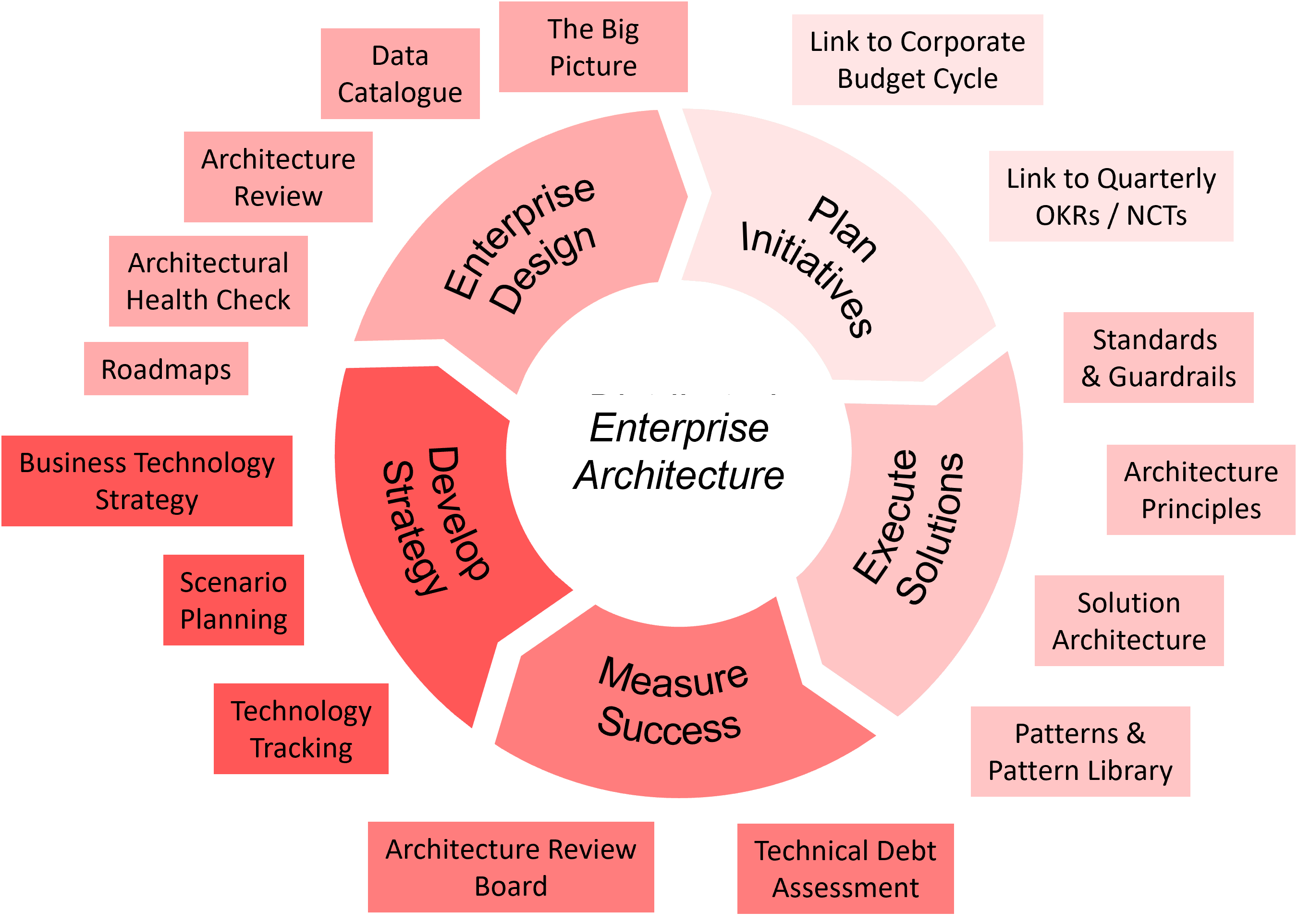
This is the architecture view of the corporate planning / change lifecycle, which is often closely aligned to the corporate finance and budgeting cycle. The stages have been adapted from the high-level strategy execution framework depicted in Whynde Kuehn’s book Strategy to Reality. In fast-moving industries and businesses that have adopted an agile approach to continuous change, it might run quarterly within the annual financial cycle. In others, it is more closely integrated with the annual finance and budgeting cycle. Either way, architecture acts as the bridge between strategy and implementation, shaping prioritisation and the allocation of resources, executing changes to business services and solutions and feeding the results into the next iteration of the cycle.
IT is often a key enabler for the delivery of an enterprise strategy and IT change, with its complex web of dependencies and its need to happen while still keeping the enterprise running, is hard to accomplish with success. But enterprise architecture is not just about IT change. All elements of an enterprise are subject to continuous change, and fall within the scope of this lifecycle to ensure a coordinated approach to delivering the successful pursuit of the enterprise strategic priorities.
In many enterprises, technology has become an integral part of a fully digital business. For these organisations there is no need for separate business and IT strategies – their digital business strategy contains both. Other organisation retain separate but connected business and IT strategies. In the Develop Strategy phase, Enterprise Architecture services play a leading role in facilitating and articulating an organisation’s business and technology strategic direction.
With Enterprise Design, strategy is translated into actionable change, reflecting all facets of the organisation, with roadmaps and an analysis of the gap between where the enterprise is today, and where it wants to be tomorrow. These then inform the corporate exercise to Plan Initiatives, often as part of an annual budget / planning cycle, but increasingly actioned on a quarterly basis as part of an OKR or NCT review cycle. Whether the outcome is a set of resourced projects and programmes, or epics for implementation by product and service teams, the prioritisation of resources and the execution of change must be driven by the architecture if the organisation is to steer itself towards its declared goals.
Execute Solutions is where the enterprise-wide view is passed into multiple hands via solutions architecture, which is often devolved to different agile delivery teams. The use of standards, guardrails, principles and architectural patterns, and a well-connected architecture community of practice ensure that these parallel semi-autonomous activities contribute their share to the common goals.
Not all change runs smoothly, and it is vital to Measure Success on a regular basis to feed outcomes into the evolving architectural view of the organisation. Technical debt may be willingly incurred in pursuit of opportunities or as an inevitably consequence of limited resources, and needs to be factored into future rounds of the cycle via product, service or solution roadmaps.
Click on any of the 16 services in the diagram above to learn more about them. Or view the full service catalogue here.

